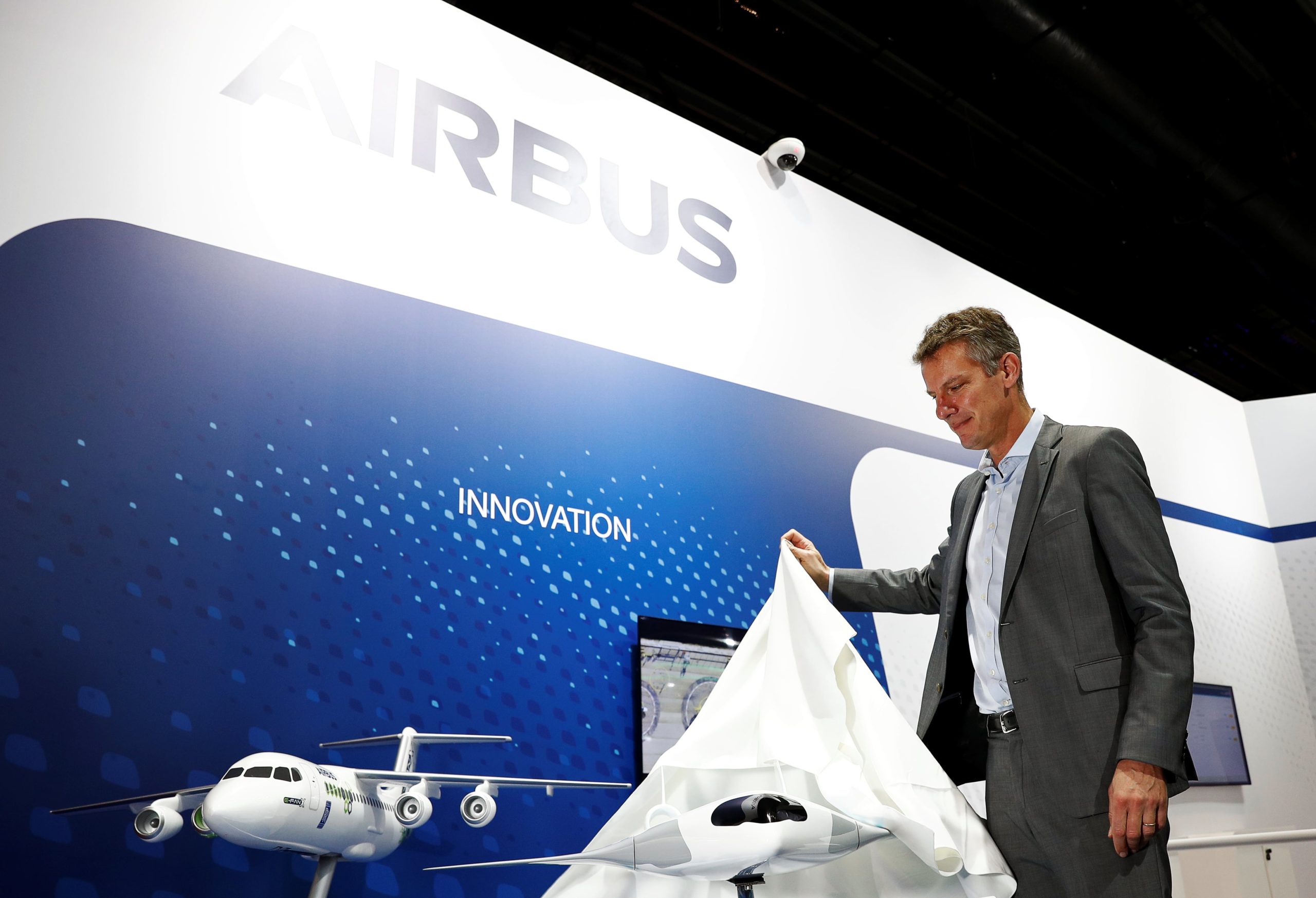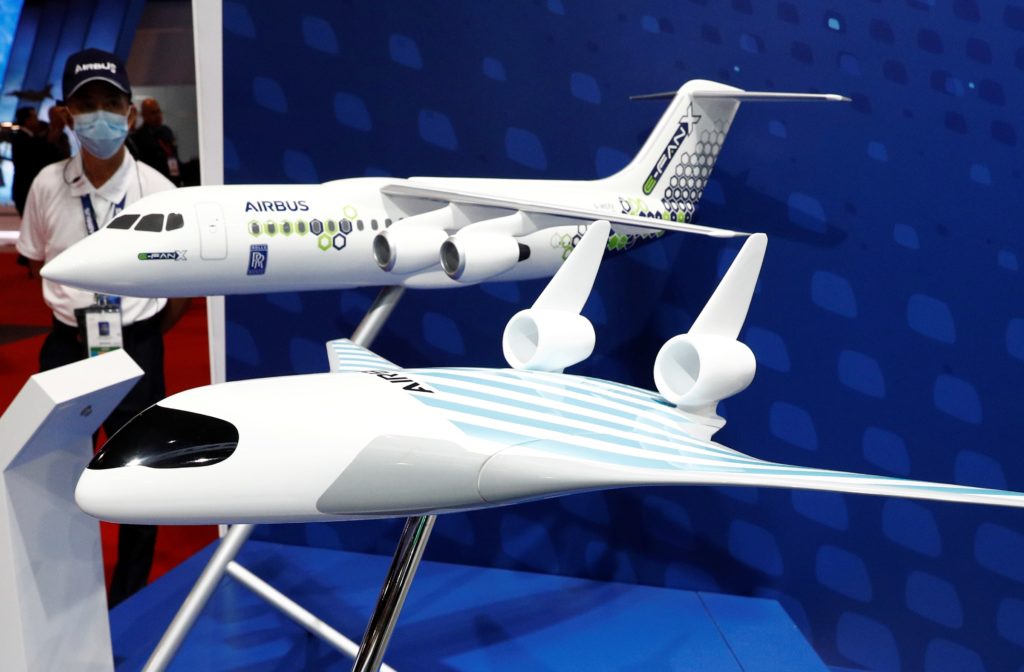Airbus unveils ‘blended wing body’ plane design after secret flight tests
 Airbus’ Executive Vice President of Engineering Jean-Brice Dumont unveils a model of the MAVERIC aircraft at the Singapore Airshow in Singapore February 11, 2020. (Photo: Reuters)
Airbus’ Executive Vice President of Engineering Jean-Brice Dumont unveils a model of the MAVERIC aircraft at the Singapore Airshow in Singapore February 11, 2020. (Photo: Reuters) SINGAPORE – Airbus has unveiled a curvaceous aircraft design that blends wing and body, designed to slash carbon emissions by some 20%.
The European planemaker has been carrying out flight tests of a 3.2-metre-wide technology demonstrator, code-named Maveric, at a secret location in central France since last year. It lifted the veil on the design at the Singapore Airshow.
The concept of a “blended wing body” design has been around since the 1940s and led to the US B-2 bomber, as well as the X-48 research project between Boeing and NASA a decade ago.
Such aircraft are complex to control but produce less aerodynamic drag, making them more efficient to fly.
Planemakers are revisiting such designs as the passenger jet industry tries to commit to more environmentally friendly aircraft.

A view of models of Airbus’ MAVERIC and E-Fan X aircraft at the Singapore Airshow in Singapore February 11, 2020. (Photo: Reuters)
“We believe it is high time now to push this technology further and study what it brings to us,” Jean-Brice Dumont, executive vice-president of engineering at Airbus, told reporters. “We need these disruptive technologies to meet our environmental challenge. It is the next generation of aircraft; we are studying an option.”
He said it was too early to say whether such shapes could contribute to the next generation of medium-haul planes, expected in the 2030s.
Since the previous generation of tests, aerospace has seen improvements in materials that make such aircraft lighter, and computing power has increased, improving flight controls, Dumont said.
Airbus is now studying how the cabin would work and how the aircraft would be integrated into airports. One unresolved question is whether such a plane would have windows or use video screens to give passengers a sense of their surroundings.
Another issue that has dogged such experiments in the past is how to handle sensations of movement.
Because passengers would be sitting further out from the centre of the aircraft, compared to the classic ‘tube and wings’ model, they would move further when the aircraft turns. Rival Boeing has put more weight on a potential cargo role.
Reuters


